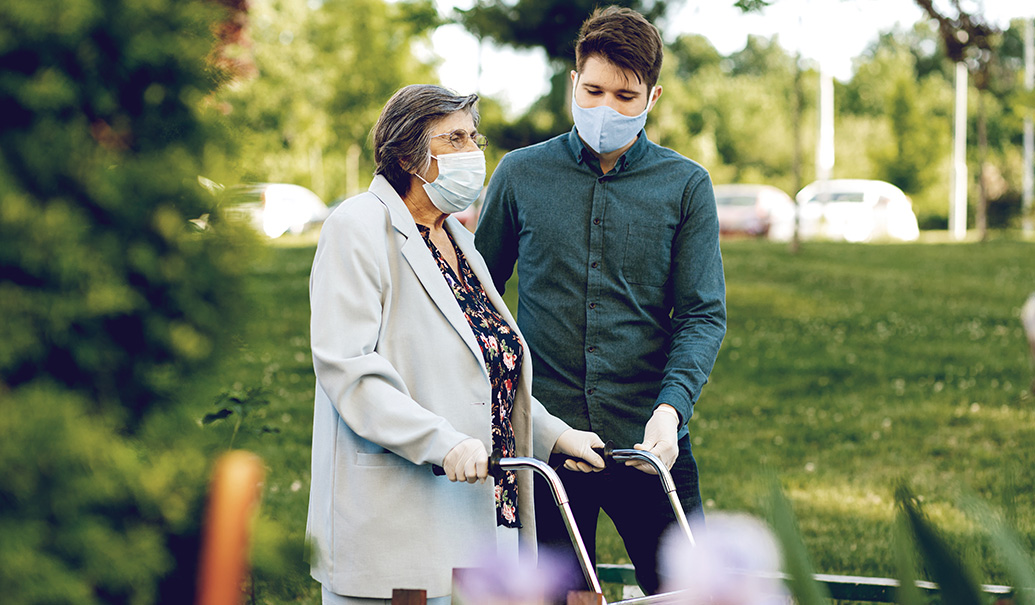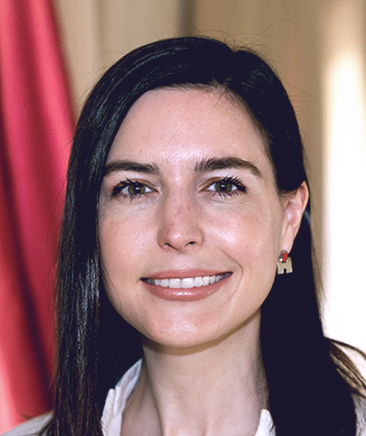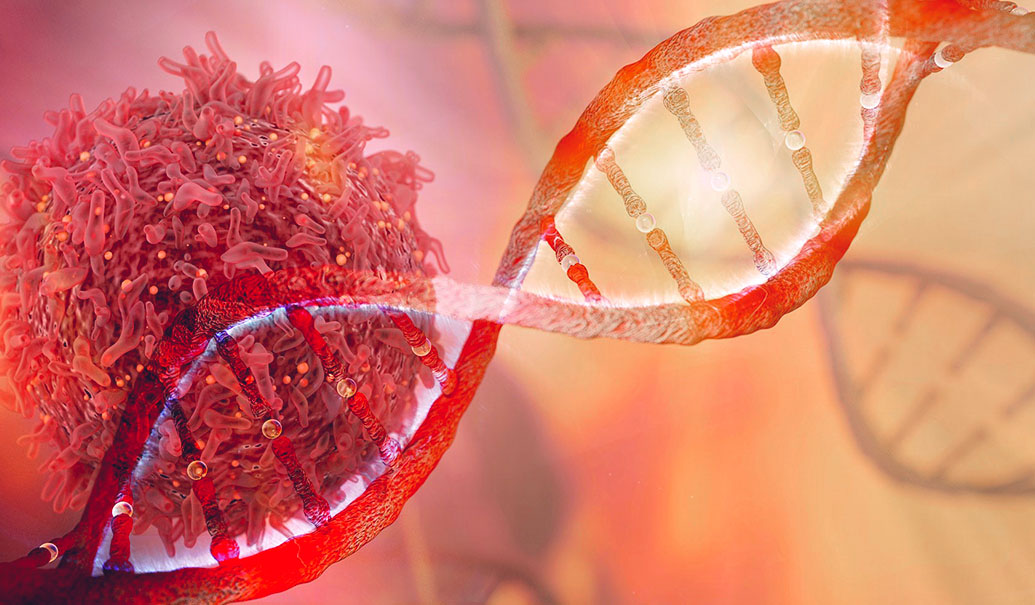When I heard that Dr. Kashyap Patel, MD, had taken on the role of president of the Community Oncology Alliance (COA), an advocacy group for community oncology patients and medical practices, I reached out to him to find out what he’s currently seeing as an industry leader and practicing oncologist. Throughout our insightful discussion, Dr. Patel offered his perspective on what is happening on the ground in cancer care delivery, particularly in the community setting for healthcare providers who treat cancer patients daily—a topic with which he is intimately familiar due to his role as the CEO of Carolina Blood and Cancer Care Associates. We also discussed some of the challenges within the oncology environment, such as disparities in cancer care as well as where he sees the field progressing in the future—and the role pharma can play.
Watch the video to hear the full conversation between Christina Corridon and Dr. Patel
Christina Corridon: Thinking holistically about cancer care delivery over the past five years, what do you consider the most influential evolutions in oncology?
Dr. Kashyap Patel: On the macro level, the oncology care model or the value-based care concept taught us how we will define the way we practice. The findings have concluded that value-based care has improved the patient experience.
For example, we can reduce hospitalization by providing more access to care for patients. When a 45-year-old single mother with breast cancer has a fever at 7:00 p.m. on a Thursday night, we can get her the right access to urgent care. If we did not have care coordination after hours, then she would end up in the ER. She will spend 12 hours there, and her three kids at home will not understand what’s happening to mama. She may be hospitalized and lose three days of work.
This is what value-based care has taught us—how we define the value of healthcare to human beings. I can sell $10 million of services, but if these do not help the person they are meant to help, it doesn’t matter.
On the micro level, the advances we’re seeing are in targeted therapies, precision medicine and CAR-T-cell therapies. We are shifting away from the traditional concept of cytotoxic chemotherapy, which is more like carpet bombing versus using laser-guided missiles. Now we are able to determine a maximum administered dose (MAD) and multiple mutations and develop drugs accordingly. This approach not only reduces side effects, it also improves the quality of care. We also have realized, however, that there are disparities in these treatments when precision medicine studies do not reflect the genome of certain populations.
“If you create an ecosystem that breaks the silos and brings everyone together under one goal, that may be a way that pharma can be part of the solution.”
Dr. Kashyap Patel, President, COA
CC: The topic of treatment disparities deserves a lot more dialogue. You mentioned cell and gene therapy as an innovation. So far, in the community setting, cell and gene therapy has been inaccessible. What are your thoughts on the ability for cell and gene therapy to expand into community networks?
KP: I believe that whatever is right for my patients, we should do. For example, we work with a couple of health systems that have CAR-T-cell and other cell and gene therapies available. Each time I see a patient who is an appropriate patient for a clinical trial, I always refer them to the doctors I know who provide these therapies.
But a lot of patients may not have access to the transport they need to get this type of care. Just to give you an example, I had a 78-year-old female patient living in a very rural part of South Carolina. I wanted her to visit another office and she said, “I’m afraid of crossing the state line. I cannot go there.” If we do not democratize the smaller centers to be able to offer cell and gene therapy, it will be restricted to people with resources or who live in bigger cities.
CC: You’ve been talking about some predictions about how oncology will evolve in the future, including ways to address some of these inequities in care and clinical trial access. What else would you highlight as your top predictions for the future evolution of oncology?
KP: In the next 10 years, I think that virtually three out of four patients will be treated with targeted therapies. My second prediction is that we’ll be screening patients ahead of the cancer diagnosis, before doing mammograms, by using a blood test. My third prediction is that we will not be waiting for a scan to show progression. We’ll be using minimal residue disease (MRD) testing before the lab’s detection. I think most patients will be diagnosed, treated and monitored using liquid biopsy in the next five years.
On the manufacturers’ side, I think clinical trials will have to be more inclusive. There may be an impetus to get more small and mid-size practices to include more minority patients in these trials, and the FDA may slowly start mandating this.
From the healthcare providers’ side, I foresee cell and gene therapy being more accepted. Maybe a third of oncology drugs will be virtually oral, and we will see a lot more patient-oriented treatments.
As for the patients, I think there will more longevity. At the end of the day, people will be living longer.
CC: Which is great news.
KP: As much as I talk about drug prices, at the same time, pharma is a sector that actually spends one out of four dollars in research, and that’s why we’re able to live longer. When we look at multiple players across the healthcare ecosystem, pharma is one that has helped keep people alive. Innovation and research are important, so we must be respectful of the fact that pharma invests a lot of money there.
CC: Indeed. What I’m also hearing from you is there’s a public and social responsibility pharma has in diversifying the patient population and building partnerships with the community.
KP: If you create an ecosystem that breaks the silos and brings everyone together under one goal, that may be a way that pharma can be part of the solution.
CC: That’s a great summary. It’s a collective ecosystem, in which everyone plays a role.
KP: It takes a whole village. The U.S. has done incredibly well in my experience. Over the past 20 years, there was not a single time that pharma did not stand up when we needed help for patient care. But there are small practices with two or three doctors who may not have the same level of resources that we have. And some of their patients may be dropping out of care. Attention must be paid to the gaps in the ecosystem, as seen through the cohesive process of collective social responsibility.
CC: Dr. Patel, you’ve mentioned precision medicine a few times. I believe you were quoted as saying that scientific innovation is moving at a pace where human capacity cannot keep up. How do community oncologists balance this?
KP: We need to have some sort of neutral group that is a coalition of precision medicine initiatives—something sponsored either by the labs or pharma, but then becomes Switzerland—not siding with one company versus the other. It would allow all companies to share common processes, evolve common standards and then share that information with the providers.
Community oncology has huge potential to become problem-solvers. If we take precision medicine to rural areas and try to identify mutations in virtually every patient, we can create the bioinformatics, biorepository and biobank that can be used in the future for new drug development.
CC: One thing your practice is already using is patient engagement technology. How do you see that continuing to advance and evolve in the coming years?
KP: Patient engagement technology will definitely evolve, but it will take a seismic generational shift. Half of my patients still use flip phones, and they live in South Carolina where about 20% of the area is a broadband desert. On one hand, we may expect to see technology like patient-reported outcome measures on the patient’s phone, but it may not fully happen in the next 10 or 15 years. If you are a retired person on $1,400 a month of Social Security income and you have to pay $150 a month for a smartphone and Wi-Fi, you cannot afford to do that. If the healthcare solution does not reach the person who is the poorest and the most underserved, it will lead to a two-tier system in delivery of care. Technology is less-fertile ground in underserved, marginalized patient populations.
CC: What are some of your closing thoughts for manufacturers about how to address the unsustainability of the costs of medicine?
KP: We have to show this in the pharma economic modeling. If you look at a young person who would have died in 2017 if not for cancer treatment and now he is a Ph.D.—what he contributes back in quality in life years and how much value he is going to bring to society cannot be measured in terms of dollars. We can always bring in more dollars. We cannot bring back a life. Two things I always tell my family members and friends is that we cannot generate time and we cannot bring life back to life.
Oncology drugs cost, say, $120 billion a year right now—which is probably around 5% of the total federal budget. But when you add three more years to every person’s life expectancy and consider there are two million new cancer cases, we are adding six million years of life. When you think of six million years of life—look at how much value you bring. That should be the message.
If you recognize how much charity pharma is doing and how many drugs are being given to patients who don’t have insurance—those are the stories that are not being told. And I would love to explore ways that we could build on those stories, which are not just about innovation. They are about a macro level of life contribution.
CC: That’s really the way to think about it. Thank you so much, Dr. Patel. This has been a great conversation.
Add insights to your inbox
We’ll send you content you’ll want to read – and put to use.














